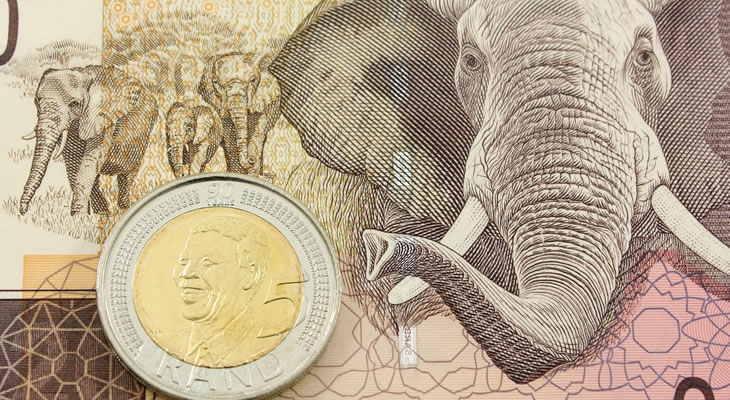- Pound South African Rand Exchange Rate Gains Despite GBP Weakness – Drop in gold and commodity prices point towards ZAR slide.
- Bank of England Releases July Financial Stability Report – Document outlines main future risks for UK economy.
- Disappointing UK Market Reports Break Previous Domestic Data Decoupling – Devastating construction sector print drives Pound lower.
- Forecast: GBP Could Rally as BoE Works to Stabilise the Economy – Could Sterling recover pre-Brexit losses?
While the release of the Bank of England’s (BoE) financial stability report sent Sterling tumbling against most of its rivals, things were looking somewhat rosier for the Pound South African Rand exchange rate as gold prices dropped.
The Bank of England (BoE) released its July financial stability report today, in which it labelled the outlook for the UK economy ‘challenging’. The report outlines many outlying risks that have precipitated thanks to the UK’s June EU referendum, in which ‘Leave’ won by 52% to 48%. Such risks include the rising current account deficit and subdued growth in the global economy.
Currently the Pound South African Rand exchange rate trades at 19.3410 after losing the majority of its gains made during this morning’s session.
Sterling (GBP) Posts Immediate Losses on BOE Report Release
The release of the BoE July financial stability report represented the harbinger’s call for many analysts as the document outlined significant risks facing the post-Brexit UK economy.
The UK’s current account deficit was the main item that attention was drawn to by Governor Mark Carney. The deficit represents the difference in value between exported and imported goods. Typically a large current account deficit is not favoured by traders and analysts as it is a warning sign of waning economic stability and strength. The bank stated the deficit is high by both ‘historical and international standards’.
The BoE’s report also stated that some of the assumed risks are beginning to ‘crystallise’, that is, to become tangible and recordable in the real world. The shrinking of the UK commercial real estate sector, high levels of UK household debt, stunted growth both in the EU and globally and the fragility of the markets due to sweeping levels of uncertainty were all highlighted as significant risks.
The report then explained that the central bank does indeed have a well thought out plan, the first item of which is an immediate freeing up of £150 billion in liquid assets thanks to the BoE lowering UK bank’s reserve capital thresholds. News of a plan comes as something of a relief after over a week of significant uncertainty.
More bad news for Sterling came in the form of an utterly dismal Markit Construction PMI data print yesterday. Dashing expectations of a slight softening to 50.7 from 51.2, the figure plunged to a worrying 46.0, showing the sector experiencing a definite contraction even before the Brexit.
Today’s services PMI also disappointed somewhat, printing just below the 52.8 forecast at 52.3.
ZAR Depreciates with Slipping Gold Prices, Pound South African Rand Exchange Rate Rallies
Rising gold prices saw the South African Rand rally briefly at the start of the week but as the value of the precious metal slipped, so did ZAR.
Strong commodity prices have kept the South African Rand fairly buoyed recently, with Zimbabwe also gearing up to take on ZAR as its primary currency in an attempt to save its flagging economy. Some economists accept that the move to a single currency over a multi-currency system would improve stability in the region as well as increase ties with South Africa, Zimbabwe’s largest trading partner.
Gold has garnered a lot of attention since the UK’s vote to the leave the European Union unleashed a tidal wave of uncertainty that is yet to leave a high-water mark. Safe-haven demand surged so naturally gold attracted many investors, along with the US Dollar and Japanese Yen. The South African Rand is practically pegged to gold prices so the increase in value also bolstered ZAR significantly.
GBP ZAR Forecasts Mostly Dependent on UK Politicians Ensuring Stability
From the UK, both industrial and manufacturing output figures are set for release on Thursday, with declines expected. Also a NIESR GDP estimate is to be released the same day. Given the current circumstances, it could be a fairly dire report and could have movement potential for Sterling after a period of practical decoupling from domestic data during the initial Brexit deliberations.
The May trade current account report is set for release on Friday and is forecast to show further increases in the deficit. Depending on the severity of the figures, it could have a significant impact on GBP as the Bank of England has singled it out as one of the main risks to the economy.
The only ecostat coming from South Africa this week is the Foreign Exchange Reserves report, which details foreign assets owned by the South Africa Reserve Bank and is unlikely to elicit much movement. However, the South African Rand could see some support if the planned Zimbabwean adoption of the currency goes to plan.
Ultimately, drastic circumstances for the UK will keep the Pound South African Rand exchange rate down and the rate is unlikely to rally spectacularly unless the South African economy tanks or British lawmakers do something to stabilise the situation.


Comments are closed.